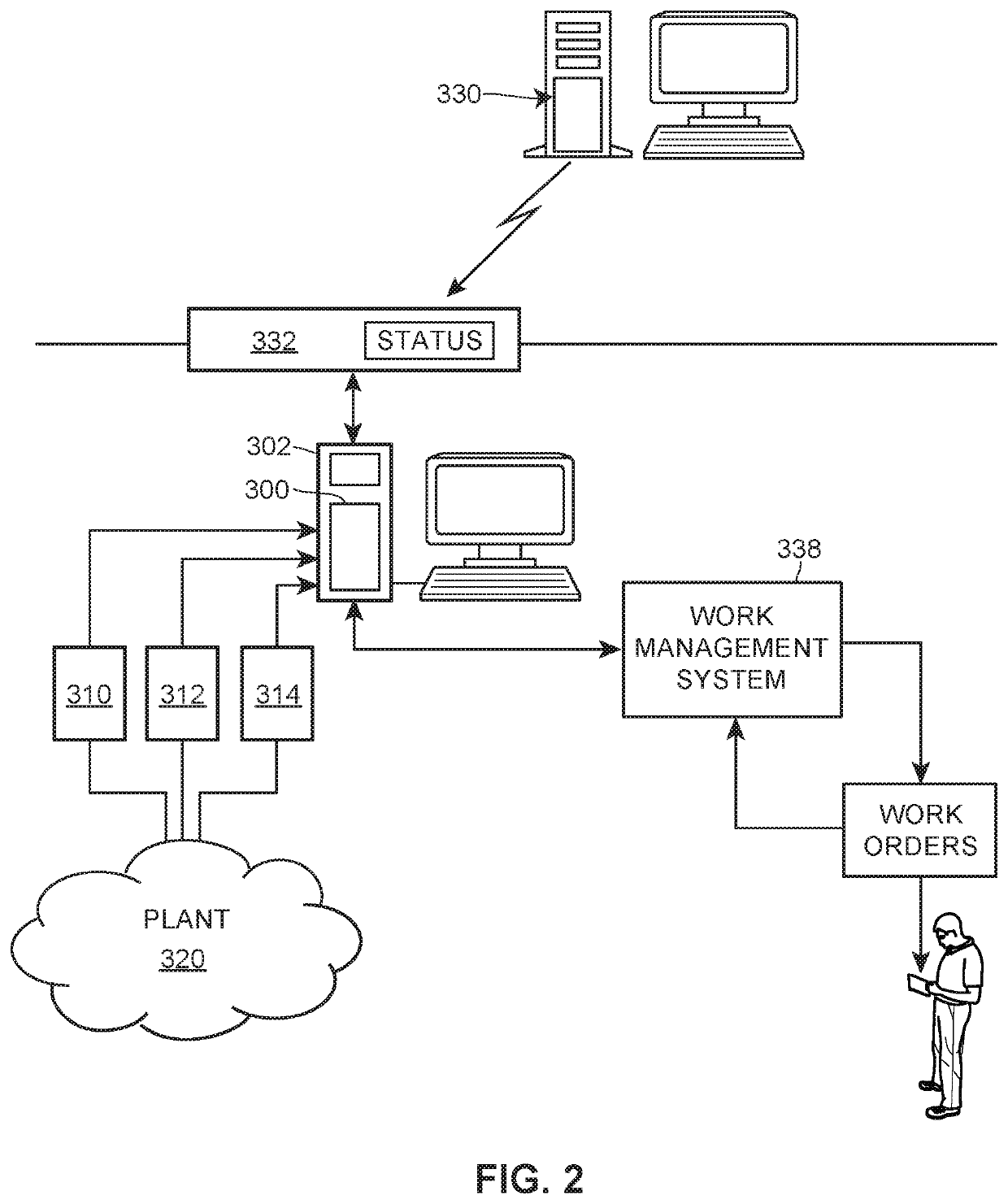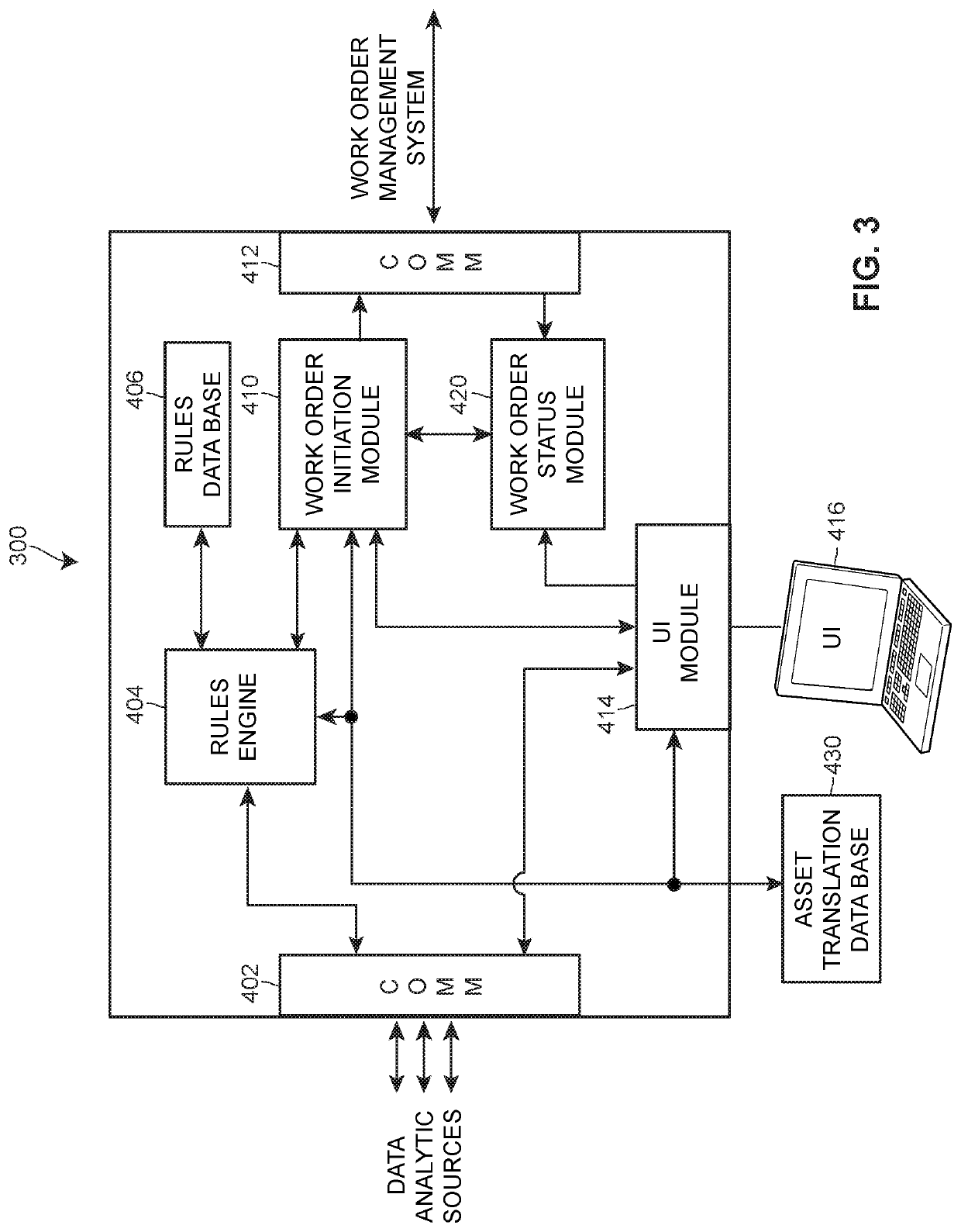Enhanced Work Order Generation and Tracking System
a work order and tracking system technology, applied in the field of process plants, can solve the problems of laborious and time-consuming, sub-optimal process performance, and high cost of product quality and quantity, and achieve the effects of increasing the accuracy of work orders, and reducing the generation of multiple work orders
- Summary
- Abstract
- Description
- Claims
- Application Information
AI Technical Summary
Benefits of technology
Problems solved by technology
Method used
Image
Examples
Embodiment Construction
[0021]FIG. 1 depicts a diagram of an example process plant, process control system, or process control environment 5 including one or more asset analysis and business management systems that perform activities within the plant 5 to analyze and manage changes and repairs within the plant 5. Generally speaking, the process plant 5 includes one or more process controllers that, during run-time, may receive signals indicative of process measurements made by field devices, process this information to implement a control routine, and generate control signals that are sent over wired or wireless process control communication links or networks to the same or other field devices to control the operation of a process in the plant 5. Typically, at least one field device performs a physical function (e.g., opening or closing a valve, increasing or decreasing a temperature, etc.) to control the operation of a process, and some types of field devices communicate with controllers using input / outpu...
PUM
 Login to View More
Login to View More Abstract
Description
Claims
Application Information
 Login to View More
Login to View More - R&D
- Intellectual Property
- Life Sciences
- Materials
- Tech Scout
- Unparalleled Data Quality
- Higher Quality Content
- 60% Fewer Hallucinations
Browse by: Latest US Patents, China's latest patents, Technical Efficacy Thesaurus, Application Domain, Technology Topic, Popular Technical Reports.
© 2025 PatSnap. All rights reserved.Legal|Privacy policy|Modern Slavery Act Transparency Statement|Sitemap|About US| Contact US: help@patsnap.com



